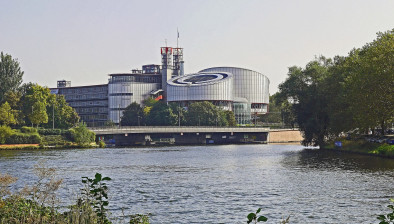ECtHR: No breach of human rights for symphysiotomy victims in Ireland

Killian Flood BL
The European Court of Human Rights has rejected the applications of three symphysiotomy victims in Ireland as being “manifestly ill-founded”.

About this case:
- Citation:Nos. 62007/17; 61872/17; 61836/17
- Judgment:
- Court:European Court of Human Rights
The women, who are to remain anonymous, claimed that Ireland had breached their human rights by preventing them from pursuing complaints that the procedures were performed without their full, free and informed consent. They also complained that there had never been an independent and thorough investigation of the practice of symphysiotomies in Ireland.
The court said that the passage of time meant it would be next to impossible for domestic courts to conduct any meaningful and fair inquiry into whether the procedures had been performed with informed consent. The ex gratia payment scheme implemented by the State, as well as the independent Walsh report, were sufficient to meet the State’s obligations to provide redress to the women, the court ruled.
Background
Symphysiotomies were medical procedures carried out in the State between approximately 1940 to the mid-1980s. The procedure was used for obstructed births and involved partially cutting through the joint uniting the pubic bones so as to enlarge the capacity of the pelvis. It was used where there was a mechanical issue in childbirth and was preferred to a caesarean section because it allowed for subsequent natural births. Around 1,500 symphysiotomies were performed in Ireland during the 20th Century.
Each of the women, referred to as LF, WM and KO’S, had undergone symphysiotomies during the 1960s and had suffered significant back pain, hip pain, incontinence and psychological problems for the rest of their lives.
However, the women never realised that they had actually received the procedure until after 2003, when the Irish government set up a support service for the victims of symphysiotomies. Two of the women only brought proceedings in 2012 and 2013 following the publicisation of the issue by RTÉ’s Primetime, while another brought proceedings in 2005. The proceedings were brought against the respective hospitals for medical negligence arising from a lack of informed consent about the procedures.
Each of the cases was affected by the Supreme Court’s decision in Kearney v McQuillan and North Eastern Health Board [2010] IESC 20 in which the Supreme Court determined that the delay in bringing the proceedings meant that there was undue prejudice to the defendants in defending specific allegations of negligence. In that case, the court said that a claim for damages needed to be reformulated to allege that there was no justification whatsoever for the performance of the symphysiotomy, rather than make fact-specific allegations about the manner in which the symphysiotomy occurred.
In the case of LF, her proceedings were reformulated in line with Kearney, but her claim was dismissed in the High Court and the Court of Appeal. The courts held on the evidence that it was justifiable for the defendant hospital to have performed the procedure, having regard to the prevailing medical wisdom at the time. Leave to appeal was refused by the Supreme Court. Both WM and KO’S abandoned their claims on the advice of counsel following the Supreme Court refusal.
European Court of Human Rights
The three women brought their cases to the ECtHR, alleging that the decision in Kearney precluded them from bringing claims that the symphysiotomies had been performed without their full, free and informed consent, which was a breach of their Article 8 right to respect for private and family life. They also complained that Ireland had never set up an independent investigation to the practice of symphysiotomies.
In the case of LF, the court said that there were serious problems in bringing claims more than 50 years after the fact and that the Supreme Court in Kearney was entitled to find that there was a real and serious risk of an unfair trial based on LF’s original claim of lack of consent. The court noted that most of the people involved in the case were either dead or untraceable. In requiring the plaintiff in Kearney (and by extension, LF) to reformulate her claim, the Supreme Court was acting within the “margin of appreciation” afforded to it in ensuring that LF’s Article 8 rights were respected.
For WM and KO’S, who had abandoned their claims in the Irish High Court, the ECtHR applied the findings in the LF decision to say that there was no breach of their rights under Article 8 of the ECHR.
The court also rejected claims by the women that the State had failed to provide a complete and thorough investigation into symphysiotomies in Ireland. The court referred to the Walsh report which had been commissioned by the Government in 2011 and that there was “no doubt” that this was a fully independent report. There was a further review by Judge Yvonne Murphy which had recommended that an ex gratia scheme should be set up by the State. This scheme was implemented by the State and compensation was paid out to nearly 400 women ranging between €50,000 and €150,000.
The women had been critical of the ex gratia scheme, saying that it did not fully compensate them for the damage because there was no individual assessment of their claim and that it existed to pressure women to withdraw legal proceedings. The ECtHR accepted that the awards were lower than awards made in the High Court, but that this was to reflect that not all women were willing to go to court or able to prove their case to the requisite legal standard.
Finally, KO’S had also made a claim that the State failed to protect her from being subjected to symphysiotomy because it knew or ought to have known that this procedure was being carried out in certain maternity hospitals. The court dismissed this claim, saying that the State had never been made a party to the domestic proceedings and that the failure to do this precluded KO’S from maintaining the complaint in the ECtHR.
Conclusion
The court said that it had great sympathy for the plight of the women in the cases and that the symphysiotomies had been conducted in an earlier age “when medical paternalism was more widely-accepted”. However, the domestic courts were entitled to rule that the women could not pursue their informed consent claims. The State had provided adequate mechanisms to investigate the use of symphysiotomies and compensate the victims.









